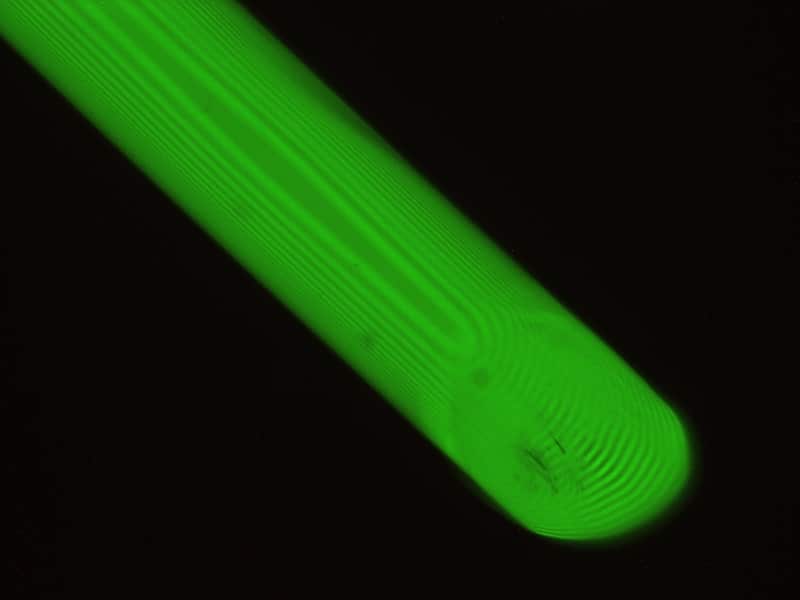Birefringence measurement of yarns explained
The overall orientation in yarns as induced by the spin-draw process can be quantified by measuring the birefringence (Dn). For the determination of the birefringence, 20 single filaments from a multifilament yarn are prepared in such a way that the cross-sections are cut under an angle of approximately 45°. A light microscope (Jenapol) equipped with a halogen light source, monochromator (l = 558.5nm), polarizer and a rotating graduated analyzer (Sénarmont compensator) is used to measure the phase difference of the incident monochromatic polarized light beam. This is visually expressed as an certain amount of black lines/bands on the sample (M) caused by speed differences of the propagating light in the anisotropic sample. The phase difference can be read out by using a compensator which is in our case a rotating

| Dn: | birefringence |
| M: | amount of bands (visually determined) |
| Q: | phase difference [°] |
| I: | wavelength of incident light beam [nm] |
| d | diameter of the filament [mm] |
